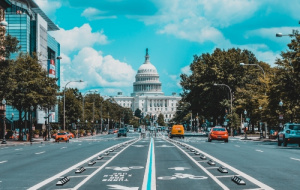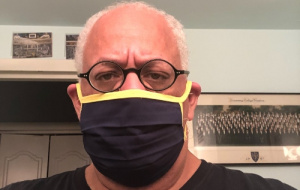 |
| Old Harvard Law School arms, with Royall badges, wheat sheaves or garbs. |
The Harvard Law School, for example, before 2016 had wheat sheaves or "garbs" in its coat of arms (Azure three garbs or a chief of Gules three open books argent garnished or the word VE-RI-TAS sable) because of its association with Isaac Royall, Jr., who endowed the first Harvard Law School professorship.
The Royall wealth was based in part on the family's engagement in the slave trade. Worse, Royall's father "treated his slaves with extreme cruelty, including burning 77 people to death," according to a Law School statement. Martha Minow, dean of the Law School, formed a special committee to study the use of the arms to represent the school and make recommendations.
The student initiative at the Harvard Law School, called Royall Must Fall, urged the Law School to change the seal. It arose from decisions in some southern states to remove the Confederate battle flag from certain public venues because of its use by those opposed to equal rights for Blacks in since the 1960s.
The three wheat sheaves ("garbs") are the arms of Isaac Royall, Jr. as found on a baptismal basin donated by him to St. Michael’s Church in Bristol, Rhode Island; on his bookplate; on a two-handled cup in the possession of the First [Congregational] Church of Medford, Massachusett; and on the tomb of Isaac Royall and his father, William Royall, in Dorchester, Massachusetts (Bolton’s American Armory, Charles Knowles Bolton, The F.W. Faxon Company, Boston, 1927, pp. 142-143). [Bolton’s work, which heraldic scholars have noted has many errors in it, is the only work in which Annear found these arms.] The Royall family owned slaves on a plantation in Antigua and Barbuda as well as their house in Medford.
After a months-long deliberative process, a Law School committee recommended in March 2016 that Harvard change the seal. Later that month, the Corporation—the University’s highest governing body— accepted the proposal to remove the Royall badges [incorrectly called "crests," which are the adornments above the helmet in a full achievement of a coat of arms] from the Law School’s official seal. At the time, Law School spokesperson Robb London told The Crimson the school would select a new seal by 2017, in time for the school’s bicentennial celebration.
Two years later, a Crimson article by Aidan F. Ryan (aidan.ryan@thecrimson.com. Twitter @AidanRyanNH) reported on the status of the removal. https://www.thecrimson.com/article/2018/4/24/hls-continues-no-seal/
At the end of that celebration, but the school remained seal-less. In an interview in 2018, Law School Dean John F. Manning ’82 said administrators have focused on the school’s capital campaign and the bicentennial and will adopt a new seal later. “It’s been a very busy year,” Manning said. “We want to think about what is a fair and effective process for identifying a new seal.”
Tthe Law School worked quickly to remove the Royall badges from campus and from Law School websites. The endeavor was mostly successful, but the seal was still visible at some locations on the Law School campus in 2017. The three wheatsheaves of the Royall coat of arms remained in at least one location on campus—the door of a Harvard-owned property at 10 Mt. Auburn St.
“As soon as the Corporation accepted the recommendation to retire the shield, the School undertook an effort to remove all known instances of it from campus locations, print materials, licensed products and web content," said Matthew Gruber, Dean of Administration.
Amanda M. Lee, former president of the Law School student government, wrote in an email that the absence of an official seal has not generated much concern among the student body, but some students “had concerns that the diploma might have a blank seal.” Manning confirmed diplomas will bear the University’s “Veritas” seal.
The university in 2021 has meanwhile created an alumni focus group to assist The University's Committee to Articulate Principles Involved in Renaming, chaired by Drew Faust. Here are the Committee's questions in July 2021:
- How do buildings, landmarks, and other named entities factor into your personal experience and sense of belonging at Harvard? Please offer examples.
- What factors and University values are most important to consider when deciding whether to rename an entity on campus? How should we take account of and balance both a namesake’s positive contributions and their failures and flaws? How do we understand these in light of the era in which the namesake lived? In light of the era in which a name was bestowed?
- How should we ensure that renaming does not result in erasing past history? What are the relative advantages and disadvantages of removing a name versus contextualizing the history of the namesake? What factors would you consider in determining whether to do one or the other?





